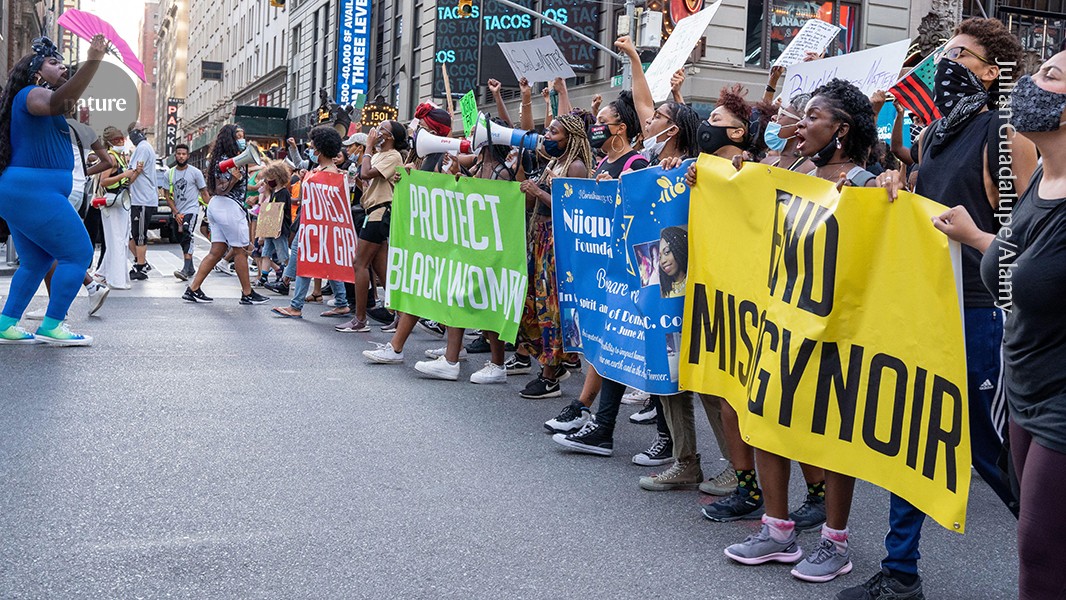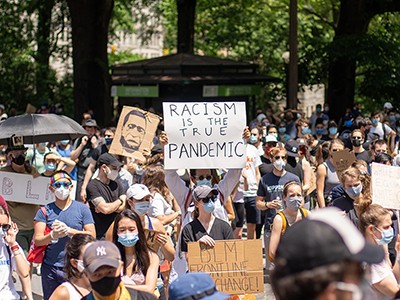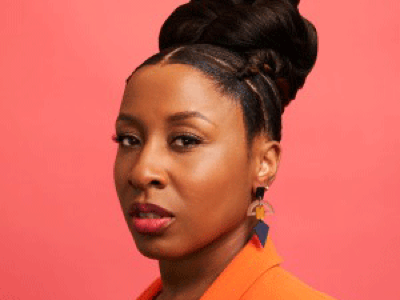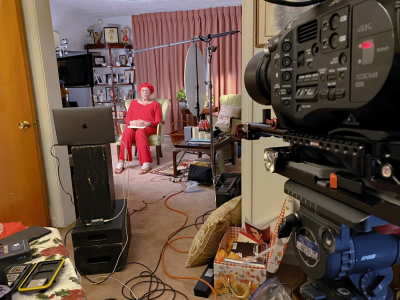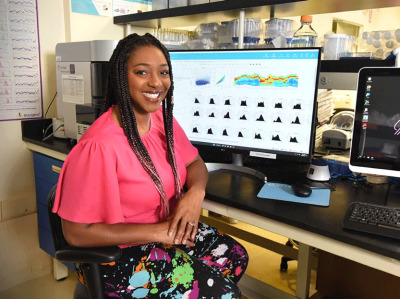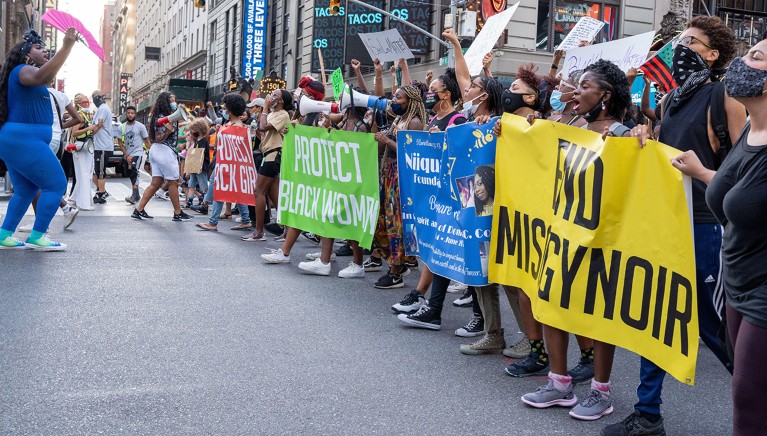
Institutions and individuals must treat Black women with respect.
Credit: Julian Guadalupe/Alamy
Black women have long flagged an insidious issue they have to contend with: misogynoir, a combination of sexism and anti-Black racism that often manifests as a lack of respect and impedes their prospects. The data are clear, the problem is pervasive, including in academia. Here, four scholars discuss their anti-racism work.
MALIKA JEFFRIES-EL: Nurture staff and students

Malika Jeffries-EL wants collective action.
Credit: Davillier Photography
The manner in which Claudine Gay’s
academic record was over-scrutinized
in the days leading up to her resignation as the president of Harvard University in Cambridge, Massachusetts, in January was challenging to witness. Despite her impressive leadership experience at Harvard and her esteemed professional reputation, some people unfairly labelled her as a diversity hire and sought to discredit her.
As a Black woman in higher education, I know only too well how often we are asked to prove ourselves — we must work twice as hard to get half as much, yet our imperfections are seldom overlooked. In 2022, only 1.9% of the 189,362 full professors at US institutions were Black women (see
go.nature.com/4erc6hz
). By comparison, Black women make up 7.8% of the overall US population.
Triumphs and challenges have marked my journey as a Black woman in science, technology, engineering and mathematics. The pursuit of knowledge has come with the exhilaration of discovery, and I have been honoured to guide and support many students. But I have also routinely encountered negative behaviours, ranging from subtle yet undermining microaggressions — such as the insidious questioning of my credentials and abilities or being unfairly labelled as an angry Black woman when I assert myself and voice my concerns — to assumptions of incompetence, tokenization, unconscious biases and, in some cases, overt discrimination or harassment. And, although I am grateful for many supportive colleagues, I still feel isolated in academic spaces, which are predominantly white. Many specialists think that this often leads to imposter syndrome, but for me it has had the opposite effect — it underscores how necessary my presence in these spaces is.
How white supremacy became a global health problem
In 2020, I left my chemistry research to be an associate dean of the Graduate School of Arts and Sciences at Boston University. In this role, I focus on addressing systemic inequities that perpetuate the marginalization of some students, such as financial barriers, lack of mentorship and limited access to research opportunities.
I have found that it is crucial to improve the climate for Black women. This requires collective action; institutions must stop placing the burden of solving these systemic problems on the people facing them.
Universities need a critical mass of faculty members who are Black women, not just to foster a sense of community and belonging, but also to send a powerful message: Black women are valued researchers and educators.
Arranging unconscious-bias training for all faculty and staff members and students is also essential, but it must be taken seriously and be part of more-comprehensive changes. Implicit biases hinder Black women’s progress in countless ways, but too often such training is treated merely as a box-ticking exercise.
And Black women are over-burdened with service activities, such as mentoring students of colour, participating in diversity, equity and inclusion committees and leading student recruitment. They must be compensated for their time providing such services and others must also be enlisted to perform this work.
MONICA R. MCLEMORE: Social justice is health care
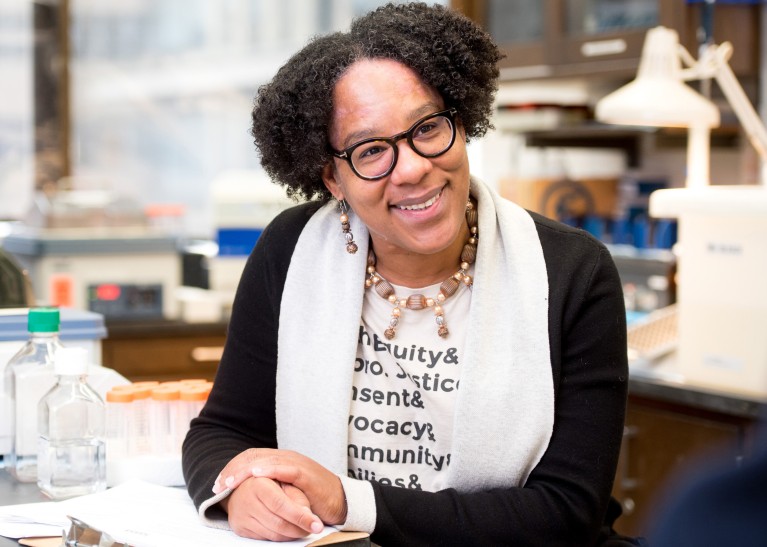
Monica McLemore is working to make teaching materials for nursing more inclusive.
Credit: Barbara Ries
The reproductive life course — from puberty to pregnancy to building a family to menopause — affects all things from womb to tomb, and illustrates
how structural racism influences health outcomes.
Through my research on birth equity, I found that clinical tools are not the answer to achieving sexual and reproductive justice — the ability to have bodily autonomy across the reproductive spectrum. The social, political and environmental conditions in which people attempt to live, love, work, play, pray and thrive matter much more to their health than does the physical wild card they are dealt at birth.
This is true in my own career, too. I love being a teacher and a researcher, but I do not love the settings in which I attempt to do my work. My experience as a Black woman in academia has been frustrating. The recent deaths of prominent Black women in academia, and several reports of the appalling treatment of others by their institutions, are constant reminders that the excellence of our scholarly work doesn’t protect us from being overlooked and discredited.
Academic workplaces are still failing Black women; they must do better
I have experienced this isolation directly. I worked for almost 20 years at the University of California, San Francisco. During my time there, I was the lone Black tenured associate professor in a campus hosting more than 3,500 faculty members. I am familiar, too, with the lack of support and daily assaults to one’s legitimacy that ‘onlys’ must navigate daily.
Now, at the University of Washington in Seattle, alongside my work on anti-racist reproductive health and rights — including on abortion and related care — together with colleagues I have set up the Manning Price Spratlen Center for Anti-Racism and Equity in Nursing. We advise institutions on how to integrate anti-racism content in syllabuses and assist scholars and publishers in making university teaching materials more inclusive. We listen to students and amplify their voices, including on our blog (see
go.nature.com/4dwwnky
), and fund equity-focused projects developed by students.
In my view, academic institutions can improve their environment by restoring the protections of tenure and academic freedom. They should ensure donors do not have undue influence over faculty matters, including appointments or promotions.
RUBY ZELZER: Racism in academia, the elephant in the room
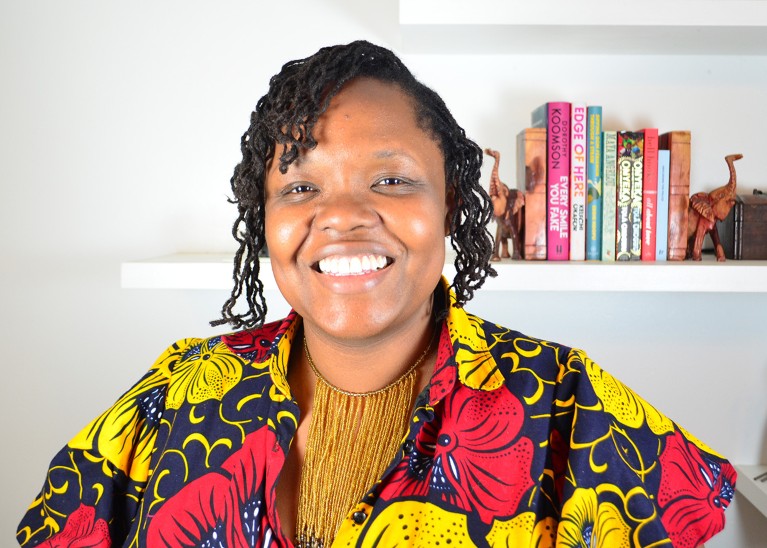
Uphold your pledges, says Ruby Zelzer.
Credit: Ruby Zelzer
Racism in the processes and systems of academic institutions and funding bodies has a devastating impact on the career progression of Black women in UK academia. National statistics show that Black women are the smallest group among professors, by far. In 2022–23, just 60 of 24,405 professors (0.2%) were Black women, despite an estimated undergraduate entry rate of about 5.0%. As tiny as this number is, the number of professors who are Black women increased by 15 that academic year‚ the
largest increase since records began
. Contrast this with white women who, in absolute numbers, are the fastest growing group, totalling 6,190 professors in 2022–23 — an increase of 320 in one year. Furthermore, take note that white men comprise the largest group (13,280 were professors in 2022–23) (see
go.nature.com/3tuzs5d
).
A Black mathematical history
This is a small glimpse of the numerous data sets that map deeply unpleasant human experiences in academia. For many institutions, the mere mention of the word racism produces such fear and paralysis that it triggers not actions but silence. In 2020, after the murder of George Floyd in the United States, many institutes experienced a ‘black square summer’. They acknowledged anti-Black racism for a day, posted black squares on their social media, then rowed back on their pledges substantially over the years that followed. Deleting the black squares, deleting their statements and eventually returning to business as usual — discriminatory systems and processes intact or even strengthened. As an example, UK Research and Innovation, the country’s largest scientific funding body, acknowledged in 2020 “
persistent systemic racial inequalities
experienced in the research and innovation system”. Yet, in 2023, it produced a
diversity, equality and inclusion strategy
that did not even mention race or racism. Interesting how explicit discussions of tackling systemic racism can just vanish with the stroke of a pen.
Black people in academia have to be especially wary of senior leadership positions. These glass cliffs are precarious places, where Black academics are often ostracized for merely stating the fact that institutional racism exists in UK research. Institutional conversations on racism typically emphasize resilience, yet, if workplaces were centred on care for all individuals, would there be such a strong need for resilience? This focus can be viewed instead as an attempt to normalize a violent workplace.
Black academics constantly develop solutions towards an equitable future, but the work of dismantling racism has never been and will never be the duty of Black people. Racism in academia is deeply ingrained in institutional systems, structures and procedures. It is the beneficiaries of these systems who need to engage with eliminating the inequity that has been, and continues to be, perpetuated in their name.
TIARA MOORE: Build a supportive community
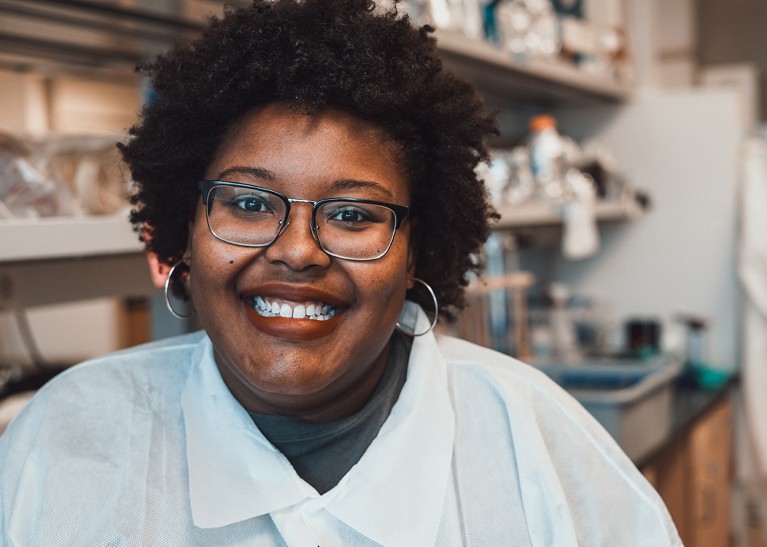
Tiara Moore founded Black in Marine Science to create a space for Black folks to connect.
Credit: Courtney Baxter
There’s a nasty myth about who belongs in the water. I often hear it when I tell people I’m a marine scientist — they take one look at me and ask whether I can swim. Of course I can. I love the water. This prejudice is just one of the many barriers that folks who look like me routinely encounter in a field that remains one of the least diverse in US academia. Only 2–3% of PhDs awarded in ocean sciences have gone to Black people in the past 20 years, with women making up a minority. Those walls will stay up without some serious culture change. And that’s exactly what I’m working on.
Black in Marine Science (BIMS) came from my need to create space for Black folks in the field to simply exist. A
post on Twitter in 2020
sparked the growth of a community, first on social media, then in real life. People were eager to connect, and within four years BIMS became a non-profit organization with more than 500 members across 34 countries. Oceanographers, marine scientists, film-makers, community members, fishers and students have a space to come together and thrive.
Facing racism in science, ‘I decided to prove them wrong’
Before founding and leading BIMS, I spent years researching how pollution run-off affects bodies of water. Both upstream and downstream contamination can have a massive impact on the overall health of a river or estuary. Sometimes all it takes is one toxic site to cause an algal bloom that suffocates a whole ecosystem. Academia isn’t so different. A toxic situation — such as an accumulation of microaggressions or a single especially bad encounter — can affect an entire university campus. And an ecosystem that doesn’t welcome Black academics is not a healthy one. Our knowledge and perspectives are necessary for the field to move forwards.
The BIMS community tells Black scientists: ‘you belong here; your work is important’. It gives people a network and regular events — with this support, they can stay in the field and go from being the only Black scientist in their laboratory to the first of many. And it creates bridges to Black communities beyond marine science. The
virtual BIMS Institute
, for example, shepherds community-science initiatives and communicates research outside academic circles, through BIMS television programmes and documentaries.
I can feel the tides shifting about who belongs in the water, and I’m so excited to ride this wave.


